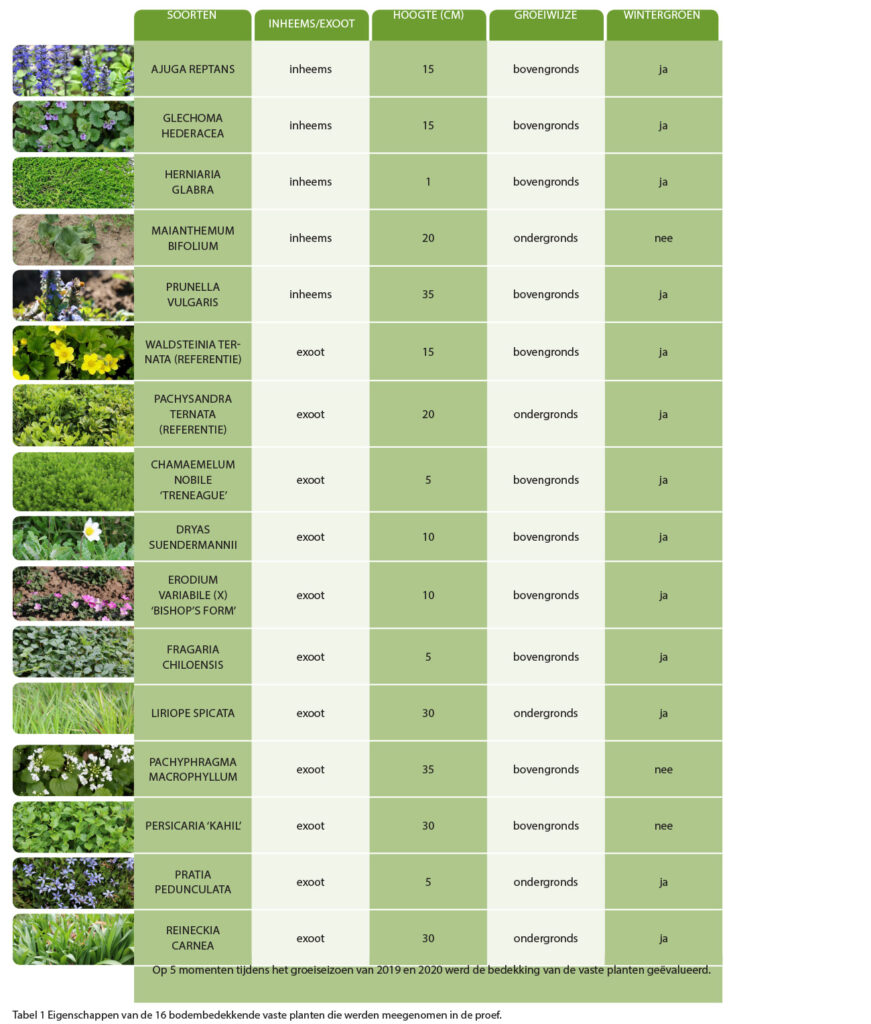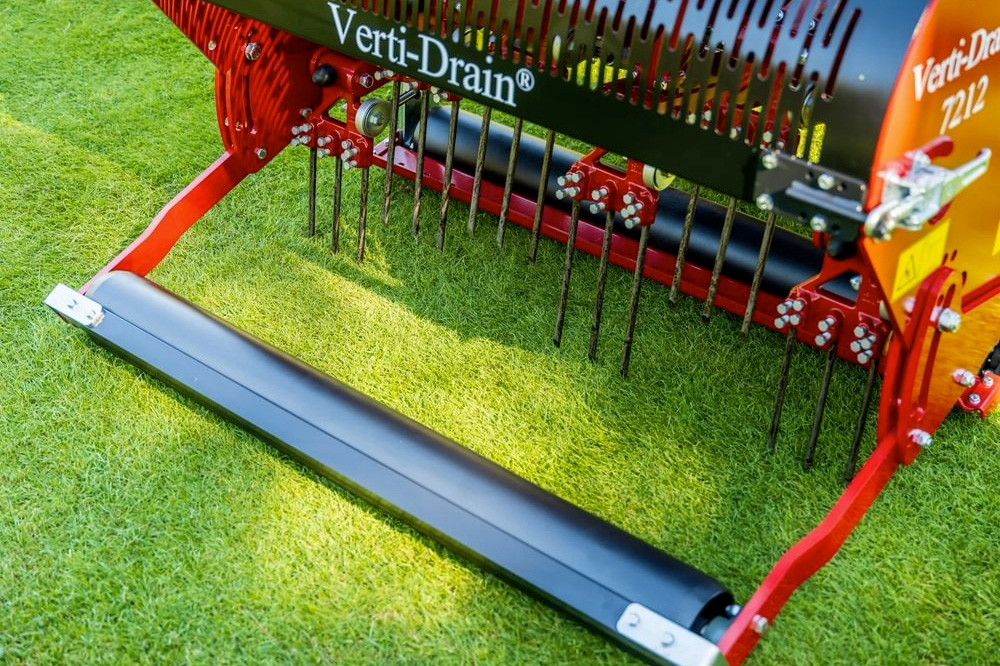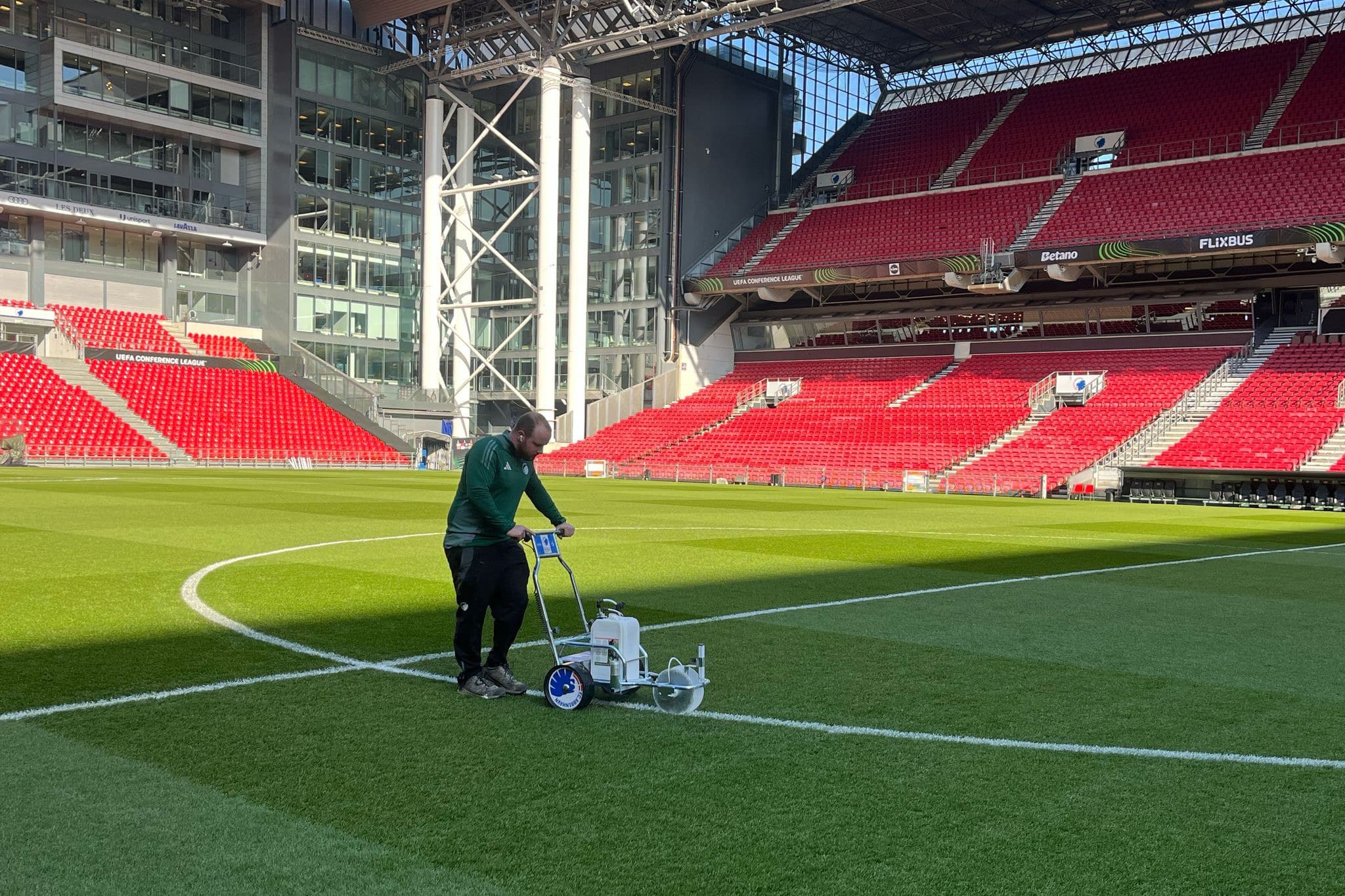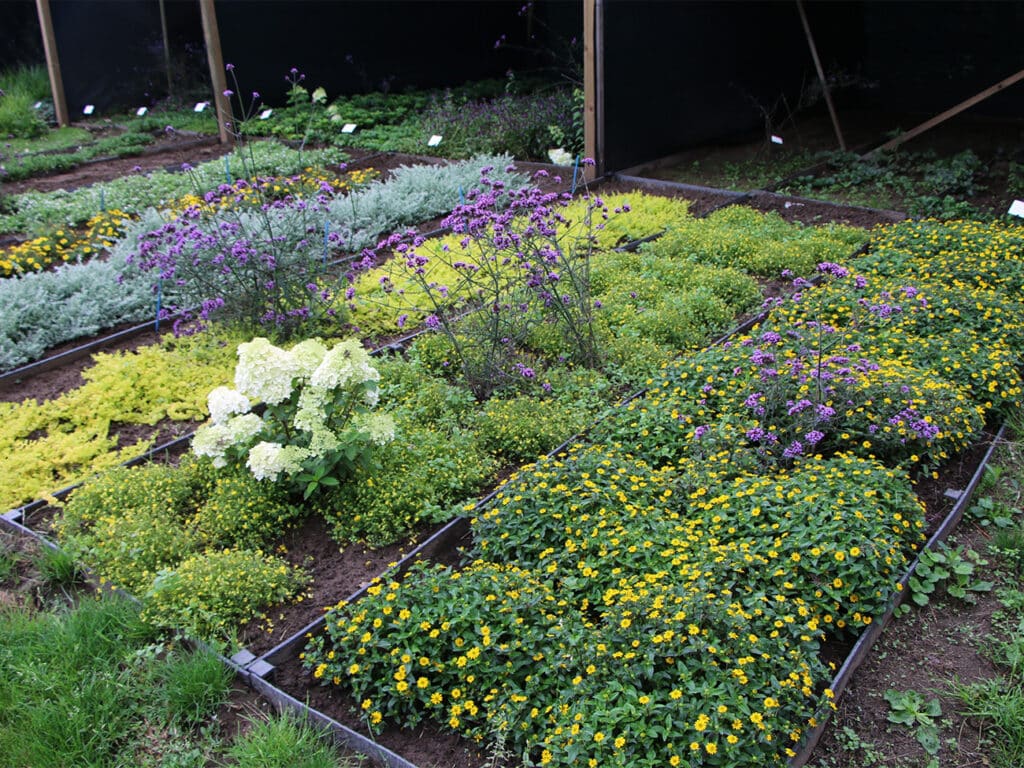
Annual and perennial ground covers as undergrowth for natural planting
An assortment of ground-covering perennials was tested at the Ornamental Horticulture Experiment Center under different light conditions, alongside annuals and ground-covering shrubs. In this article you can read the findings after two years.
Groundcovers form the lowest layer in a natural planting, with another hem layer above that containing shrubs, a shrub layer and a tree layer. In garden and public-garden applications, they are also often used as bedding, without or with one or more of the other natural layers. They cover the otherwise bare soil, which offers advantages toward weed pressure, but also toward reducing soil drying out due to evaporation. However, a number of well-known species are often resorted to, which are not always applicable to all conditions.
Ground-covering perennials under different light conditions
A trial was set up in 2019 with a selection of sixteen groundcovers, each planted in sun, semi-shade and shade conditions. The species were selected based on their leaf shape, growth habit (underground vs. above-ground shoots), evergreen character and origin (native/exotic). In addition, the association with a shrub (Hydrangea paniculata 'Bobo'), a bulbous plant (Narcissus poeticus and Crocus vernus 'Remembrance') and a rising perennial (Verbena bonariensis) was also evaluated. The ash assortment chosen included some reference species such as Waldsteinia ternata and Pachysandra ternata, as well as more unfamiliar species such as Reineckia carnea.
The species Erodium and Maianthemum had low cover under all light conditions. In contrast, Fragaria, Prunella, Reineckia, Liriope spicata and Persicaria performed well under both sun, semi-shade and shade conditions. Species such as Ajuga, Dryas, Glechoma and Herniaria had a clear preference for sun or semi-shade conditions, while Pachysandra, Pachypraghma and Waldsteinia did better in shade conditions. Glechoma and Prunella are rather short-lived, but local rejuvenation keeps them providing good cover. However, this can also cause metastasis in nearby plantings.
On 22/06/2020, after a long drought period, a drought tolerance score (0 -> 3, with 3: no drought damage) was given independent of cover. Here, more shade-loving species were found to be clearly more sensitive, but also some species that performed well in sun, such as Ajuga reptans and Reineckia carnea. After a rain period, all species recovered well.
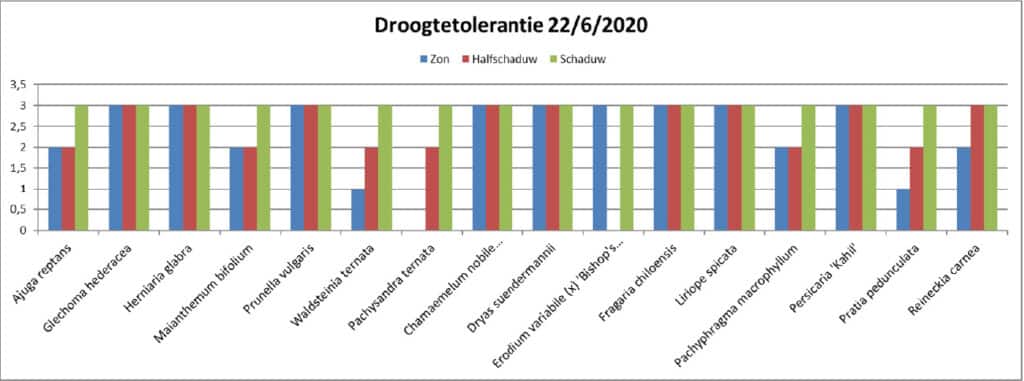
Groundcover bedding plants
In both 2019 and 2020, beds of bedding plants were planted alongside perennials, each starting in June, with reference species Sanvitalia speciosa. The average cover of these bedding plants increased rapidly after planting and also remained relatively constant during the growing season.
Only with Nemesia and Bidens was the coverage and thus weed control capacity insufficient. During the June to September growing season, bedding plants can certainly be a full substitute for perennials to reduce weed pressure.
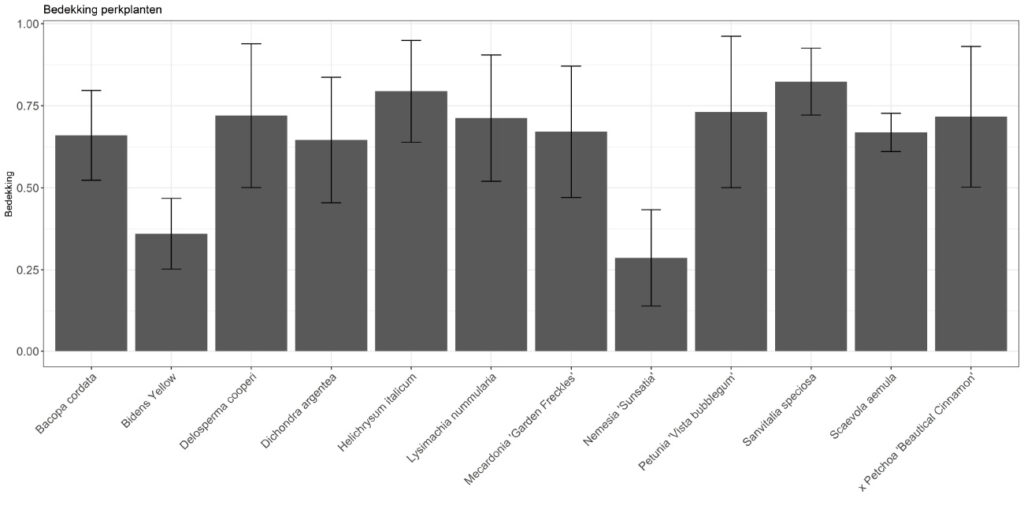
Future research: groundcover shrubs and plant mats on rolls
Ten species of groundcover shrubs were planted in 2020. The following species were chosen: Hedera helix 'Ivalice', Hypericum 'Black gem', Lonicera nitida, Lonicera 'Blond & beyond', Potentilla 'Bellisima', Prunus pumila 'Depressa', Rhus 'Gro low', Rosa 'Green summer', Rubus 'Betty Ashburner', Symporicarpos 'Hancock low'. In the first year of planting, an average cover ratio of 50 to 75 percent was already achieved here, but this trial will be followed up further in 2021.
For 2021, a planting of Waldsteinia ternata and Vinca minor as pregrown plant mats will be compared with a planting in P9, weighing the differences in cost against the time savings from faster densification and less maintenance work.
Research with support from the Flemish Government, the Agency for Innovation & Enterprise, the European Union, the Province of East Flanders, Boerenbond and AVBS, the ornamental plant and greenery federation.
